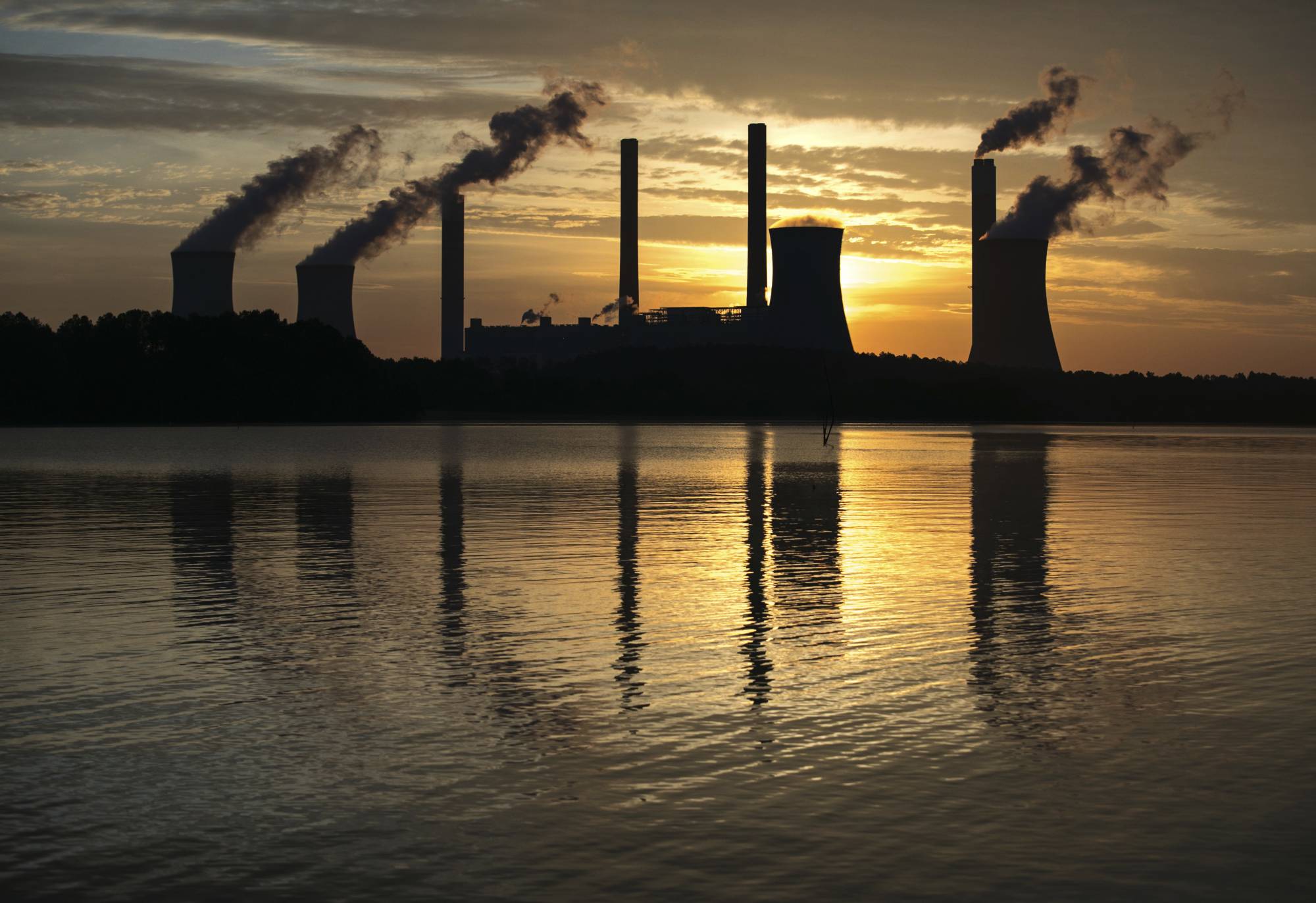
Does that Supreme Court decision on the EPA change the agency itself?
One Supreme Court case that generated the most controversy lately was a 6-3 ruling that the EPA doesn't have authority to regulate power plants' greenhouse gas...
Best listening experience is on Chrome, Firefox or Safari. Subscribe to Federal Drive’s daily audio interviews on Apple Podcasts or PodcastOne.
Emotions have been running high over some recent Supreme Court decisions. And one of the cases that generated the most controversy, the court ruled 6-3 that the Environmental Protection Agency doesn’t have authority to regulate power plants’ greenhouse gas emissions under the Clean Air Act. Devin Hartman is the energy policy director at the R Street Institute. He shared his perspective on the ruling on the Federal Drive with Tom Temin.
Interview transcript:
Tom Temin: This decision, of course, has big political implications, which we won’t go into here. But it does have meaning for how the agency operates. Correct, and what might those be?
Devin Hartman: It does, I think it’s important to recognize that the decision is actually a bit narrower than it could have been. It certainly was relative to a lot of expectations for many individuals. So to be clear, it doesn’t remove EPA’s authority to regulate greenhouse gases from power plants. It actually just basically limits the toolbox that they have to do that. So at issue in particular, of course, the root of this suit was the or the Obama administration’s interpretation of the Clean Air Act authority under Section 111, which deals with new and existing sources of emissions. And so what they said was, we think that the best system of emissions reduction is actually to, in some cases, displace fossil fuel power plants with new wind and solar plants. And that’s really called a generation shifting. And that’s the particular concept that the court took issue with. And that is now off the table. However, EPA still has, it retains its authority to go back to its more conventional regulatory tools, say reducing, requiring efficiency improvements at an existing fossil plant, or co-firing coal or natural gas facilities with another fuel, things like that. Maybe a carbon capture if EPA really wants to stretch into that space. So EPA will still go back and probably next spring issue a new rule in this line, but it’s just going to have more limited tools in its toolbox. And then of course, there’s broader ramifications if you read between the lines of the decision, but perhaps we get to that in a second.
Tom Temin: Yeah, we will in a second. But I just wanted to ask that historically, the role of regulation has been to live in the world as it is, to some extent. For example, just to make the example of automobile regulation of mileage, automobile regulation of mileage, there were nascent technologies in the 1970s, that could really reduce emissions, the car companies scream that it would never happen. And frankly, the first cars when these regulations came in, were horrible. But over the years, the technology improved, cars got a lot better, no one would go back to the cars of the 1970s or 1960s, at this point. And that’s how it has been with power plants who go kicking and screaming, but the technologies are there. So is that what the court in effect is saying is that the regulators need to live within the technologies and known quantities consistent with not stifling the economy in some way?
Devin Hartman: There was a particular interpretation on the role of technology. A lot of it really had to do with whether it was at the facility, we kind of call that in the fence line, or if it was beyond the fence line and it really dealt with the system, the overall energy system. Under the Clean Power Plan, that generation shifting concept I mentioned, that really dealt with sort of a modeling and portfolio management approach, if you will, in the energy system. That raises some more fundamental questions about EPA’s influence in shaping the energy economy. That’s where the majority got very nervous. And so we don’t think Congress intended EPA to have this type of profound authority to sort of reshape the energy economy. We think it’s actually more limited to things like technologies that are specific to a particular type of facility, which Congress very clearly gave EPA the authority to manage.
Tom Temin: Right. And EPA then had the authority again, going back to the original act, to deal with point sources of pollution, but not with the air in North America, which of course, is affected by the air in South America in the air and Asia and vice versa. It gets to be kind of fuzzy at some point.
Devin Hartman: Yeah, it really does. And, of course, there’s multiple provisions under the Clean Air Act going back all the way to the Massachusetts v. EPA decision, which is what decided whether EPA even had authority in first place, which again, is not in question here. EPA had to decide what provisions of the Clean Air Act to go after. So as you mentioned, sort of like the broader concentration levels of something in the atmosphere, there is the ambient air quality standards provision under the Clean Air Act, and EPA decided to avoid that and instead pursue this new source performance standard Section 111, which just means that they can go back to typically focusing on what standards need to be in place for new power plants as well as existing power plants. And they’ll probably go back to something that’s at least more tailored to the classification of those particular power plants going forward.
Tom Temin: We’re speaking with Devin Hartman, energy and environmental policy director at the R Street Institute. So there’s an interagency effect then of this ruling beyond the EPA?
Devin Hartman: Absolutely. So in fact, the generation shifting concept, which EPA was trying to use as its legitimization of the Clean Power Plan, actually, market forces are extremely potent in driving that transition right now. However, the bigger regulatory implications are that there’s massive regulatory barriers to entry to new wind and solar, which is actually where the Federal Energy Regulatory Commission currently has two pending notices of proposed rulemaking largely aimed at addressing just that. So naturally, it comes into the question of should there be explicit interagency coordination? Or should EPA just be adjusting its baseline assessments and its regulatory impact analysis to appreciate what is actually driving the turnover in the generation fleet?
Tom Temin: Right. So just to get to one point, you mentioned there, kind of in passing, there are regulatory barriers that are impeding the investment and construction of solar and wind projects?
Devin Hartman: Yes, they’re rather extensive, but just to give you some general numbers, the amount of wind and solar that’s trying to connect to the electricity system, right now, numbers in the hundreds of gigawatts. One gigawatt is basically the equivalent of one nuclear reactor or also one larger coal plant. So you’re looking at a massive number. And actually, that number in total exceeds the existing installed capacity of the entire fossil fleet. So that’s really the impediments to new entry that are affecting this generation shift going forward.
Tom Temin: So the bottom line, then here is that it looks like there could be some good interagency cooperative work that needs to be done now at the regulatory rulemaking level, not at the political level. And perhaps the EPA then has to maybe revisit its approach to rulemaking for existing and new power plants.
Devin Hartman: Correct. Yeah, it’s hard to see exactly which generation shifting now off the table legally for EPA, you might just see a little bit in terms of less explicit coordination. But it’s very important. I think that the two agencies talk to each other because what tools remain for EPA are going to be very limited to have an emissions impact, whereas those that have the greatest emissions impact are actually at the agencies that affect how quickly capital can deploy and in what manner. Even agencies like the [Securities and Exchange Commission] and [Commodity Futures Trading Commission] are doing a lot to address this voluntary renewable energy investment and kind of marrying that up with displacing emissions to the best extent possible kind of you hear all these ESG motivations in corporate America. There’s a lot of claims being made. But there’s a lot of confusion on what’s behind that capital and meeting those claims. So those agencies are trying to actually address how those private capital portfolios are reaching their environmental targets. And if we clarify that you’re actually going to see capital flows go to areas where you displace emissions the most. So there’s actually a lot of regulatory agency actions that can actually harness the motivations of private capital markets today.
Copyright © 2025 Federal News Network. All rights reserved. This website is not intended for users located within the European Economic Area.
Tom Temin is host of the Federal Drive and has been providing insight on federal technology and management issues for more than 30 years.
Follow @tteminWFED





